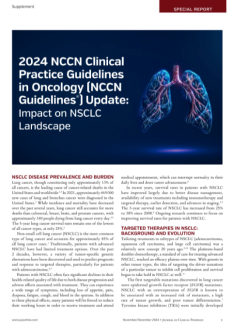Evaluating the Cost Benefits and Clinical Potential of Serum Pepsinogen Screening for Gastric Cancer
A recent study published in Gastro Hep Advances evaluated the cost-effectiveness of using serum pepsinogen (PG) screening for the early detection of gastric cancer (GC) in the US. Given that current screening methods, such as esophagogastroduodenoscopy (EGD), are invasive and costly, a noninvasive blood-based test could provide an alternative for identifying individuals at risk for GC and its precursor lesions.
Using a patient-level state transition microsimulation model, researchers assessed the impact of 1-time PG screening at age 40 compared to no screening in a hypothetical cohort of average-risk individuals. The study measured outcomes including life expectancy, quality-adjusted life-years (QALYs), total costs, and incremental cost-effectiveness ratios (ICERs), as well as secondary outcomes such as total GC incidence and mortality. The base-case PG sensitivity and specificity were set at 34.1% and 94.7%, respectively, with a range of test characteristics also examined.
Results indicated that PG screening at age 40 was cost-effective, yielding an ICER of $4913.29 per QALY gained. The screening strategy led to a 10.9% reduction in lifetime GC incidence and a 10.8% decrease in cumulative GC mortality. Notably, the proportion of cases diagnosed at localized stage increased from 30.5% to 33.6%, while those diagnosed at metastatic stage decreased from 40.8% to 37.4%. Sensitivity analysis demonstrated that the cost-effectiveness of PG screening was most influenced by factors such as endoscopy costs, the impact of chronic atrophic gastritis (CAG) on quality of life, and PG prevalence. Importantly, even when varying test sensitivity and specificity, PG screening remained a cost-effective approach.
The study underscores the potential of serum PG screening as a viable, cost-effective strategy for early GC detection in the US, where population-wide EGD screening is impractical due to resource constraints. Despite its relatively modest sensitivity, the high specificity of PG screening enables the identification of individuals at risk, who can then be referred for confirmatory EGD and subsequent management of precursor lesions. This stepwise approach could facilitate the early detection of GC and improve survival outcomes.
Currently, there is no national screening program for GC in the US, despite its disproportionately high burden on certain racial and ethnic groups. The study highlights that targeted screening strategies, particularly for high-risk populations such as immigrants from high-incidence countries and individuals with a family history of GC, could help address disparities in GC detection and outcomes.
“One-time serum PG testing at age 40 is associated with reduction in GC incidence and mortality. PG screening is a cost-effective screening strategy to improve GC mortality and should be considered in developing early detection and prevention strategies for GC,” the researchers concluded. “Furthermore, mortality benefit will depend on the test characteristics of the biomarker. Continued efforts to identify blood-based screening tests that have better performance characteristics could further improve GC prevention.”
Reference
Oh A, Rustgi SD, Hur C, In H. Cost-effectiveness of serum pepsinogen as a gastric cancer targeted screening strategy in the United States. Gastro Hep Adv. 2024;4(2):100564. doi:10.1016/j.gastha.2024.10.004

















